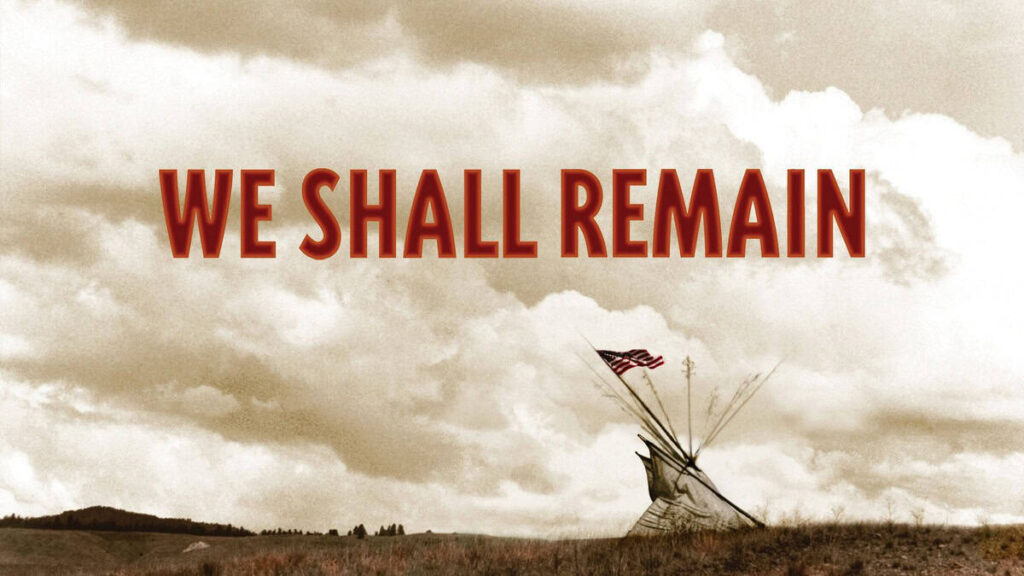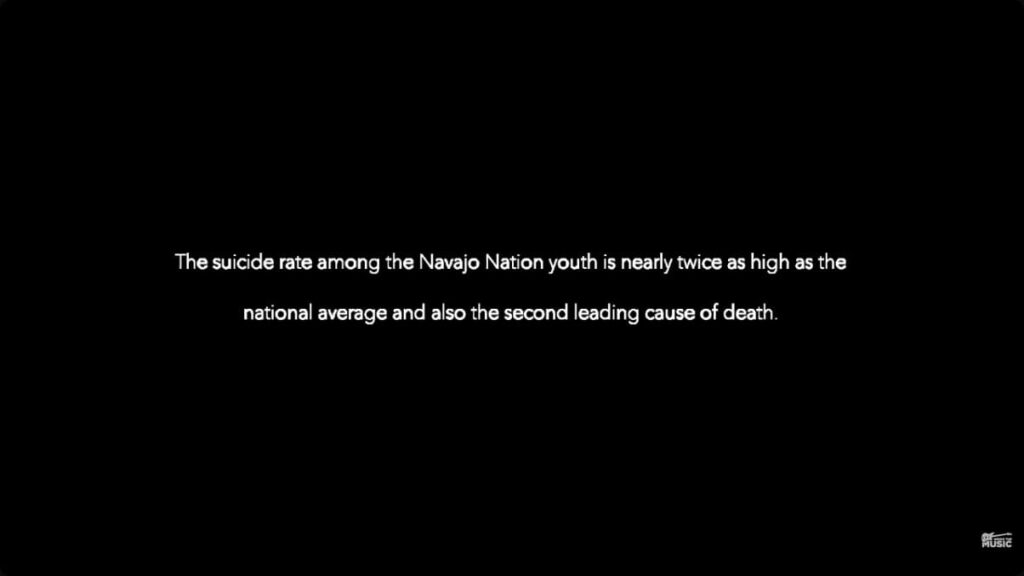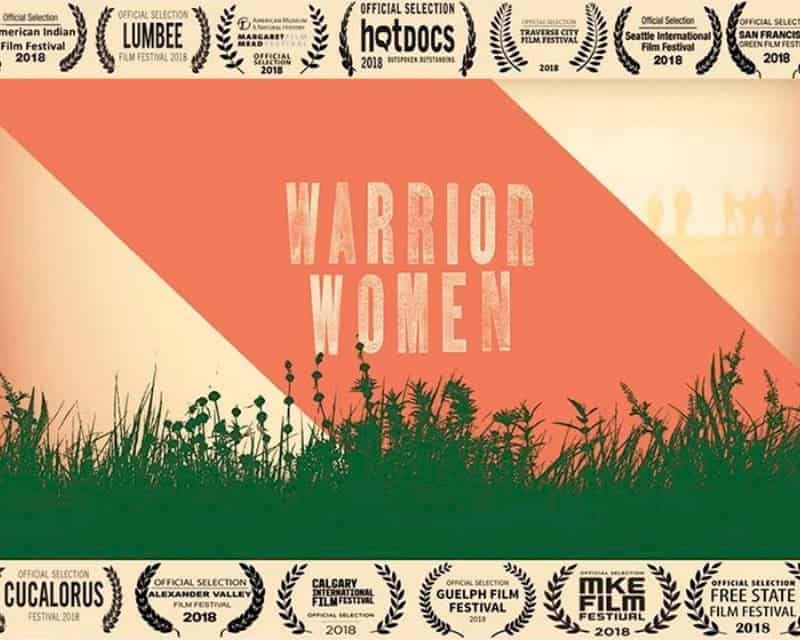5 Captivating Documentaries for Native American Heritage Month
November has begun. Besides the chillier weather, preparation for the holidays, football season, and searching for the perfect Thanksgiving turkey (or Tofurky), it’s also Native American Heritage Month. Watching documentaries on Native and Indigenous peoples is the perfect way to celebrate this.
5 Native American Heritage Month Documentaries to Watch
The tribal history of Native Americans is woven so intricately into modern-day culture, often in ways that many people overlook. The rich traditions of tribes from all across America are something to be learned, understood, and celebrated. Let’s check out our top 5 documentary picks for Native American Heritage Month.
“We Shall Remain” (2009)

Directed by Chris Eyre (Cheyenne Arapaho), Ric Burns, and Stanley Nelson, this five-part docuseries examines over three centuries of Native American relations with the newly formed United States government. It starts with the arrival of European settlers, then spans to the Shawnee leader Tecumseh, played by famed Muskeg Lake Cree actor Michael Greyeyes. Tecumseh and his brother, Tenskwatawa, had nearly been able to achieve a way to exist separately alongside the colonists. Unfortunately, all hopes were dashed with the settlers’ forced westward expansion.
The other parts of the docuseries examine the Trail of Tears, which was the brutal removal of upwards of 70,000 Cherokee Indians, among other tribes, from their homes in the southeastern U.S. to eastern Oklahoma. Wes Studi is in this.
Chiricahua Apache Geronimo is addressed in the next installment, which views both his heroic actions as well as his vengeance. Wounded Knee 1973 is the final episode of this docuseries, which concludes with the two-month-plus tense standoff at Pine Ridge Indian Reservation.
“The American Buffalo” (2023)

The animal kingdom and Native American culture have always had a symbiotic relationship. If hunters from a tribe were to kill an animal, then nearly every part of the animal would be used as a resource. It’s also important to note that when taking an animal’s life, most every Native American tribe practices a way to spiritually honor it. No loss of life is taken for granted – human or animal.
The documentary film by visionary creator Ken Burns offers a poignant, shocking, and often heartbreaking look into the Native Americans’ relationship with buffalo. “Blood Memory” is the first installment of the two-part docuseries. Numbered in the millions, sadly, buffalo have been routinely slaughtered unscrupulously and driven to the brink of near extinction.
“Into the Storm” is part two, which shows how advocates – and often unlikely allies – helped the American buffalo population grow. Although still endangered, the animal has made a comeback from under 1000 (some reports say under just 600) to just over 350,000. Peter Coyote narrates both episodes with commentary from tribal leaders, writers, historians, and environmentalists. It’s a must-see for Native American Heritage Month.
“Rez Metal” (2021)

When you think of life on a reservation, you might not think of metal music, but it’s a love that many tribal members share. Metal music is often borne out of rebellion, anger, and a need to express the deepest emotion. It’s a powerful and celebratory genre of music. This is one of the best documentaries on Native American music.
The band I DONT KONFORM is the brainchild of talented Diné (Navajo) musician Kyle Felter. Formed in 2001 with his late cousin Edwin Yazzie, the band played on the reservation and in surrounding areas. Throughout multiple lineup changes and financial struggles, Felter scraped enough money together to record a demo album. He later sent that to Flemming Rasmussen, the Grammy award-winning producer of Metallica. Later, Rasmussen and Felter jam together in a hot hogan on the Navajo reservation. (A hot hogan is one that has electricity.)
Rasmussen invited I DONT KONFORM out to Denmark, where they recorded their debut album, “Sagebrush Rejects.” Their music blends heavy guitar riffs and hard-driving drum beats, combined with elements of nature, along with melodic messages of rebellion. In an interview with Venice Paparazzi, Felter said:
Give the youth an instrument rather than a tablet or phone.
His motto remains true to this day, and Felter’s bucket list wish is to meet the band Metallica. With connections like Rasmussen, his dream might be realized sooner than he thinks.
“Warrior Women” (2018)

This amazing documentary is often overlooked – and it’s a real shame. Directors Elizabeth Castle and Christina D. King have managed to capture not only Lakota activist Madonna Thunder Hawk’s story, but the plight of women in Native tribes over the past five decades.
Madonna Thunder Hawk had some involvement with the controversial group AIM (American Indian Movement) in the 70s. AIM was an organization that championed the rights of Native Americans as well as fought for recognition and more freedoms from the government. Thunder Hawk’s daughter, Marcella (Marcy) Gilbert, worked alongside her mother.
The two helped set up the “We Will Remember” Survival School as a Native alternative to the American government-run institutional education. While the film examines generational trauma and triumph, it gives a voice to Native women who battled so bravely to maintain their way of life within their respective tribes.
“Alcatraz is Not an Island” (2001)
This documentary is essential viewing by James M. Fortier. Fortier comes with a cinematography background, which is used adeptly in this documentary film. This story is probably one of the most important and least known when it comes to Native American Heritage Month and their conflicted history.
When people remember Alcatraz, they likely recall a prison on an island in the San Francisco Bay. Alcatraz was closed in 1963, primarily due to high operational costs. In November 1969, a group of native Americans sailed (and swam) across the bay to occupy Alcatraz. Groups like Indians of All Tribes and student activists from SFSU were among the several dozen people who came out to demonstrate.
Led by Richard Oakes (Akwesasne Mohawk), Native activists LaNada Means (now LaNada War Jack) and actor and musician John Trudell would stay on the island for months at a time in order to give a voice to Native Americans and illustrate their centuries-long plight. The occupation lasted until July 1971, when the last occupier was removed from Alcatraz.
In an interview with San Francisco news outlets, Richard Oakes declared that the Indian activists were purchasing Alcatraz for $24 in traded goods. Oakes’s now-famous Alcatraz Proclamation attempted to show the irony of what had been done to Native Americans for years in regards to broken treaties and forced colonization.
Some Final Thoughts
It’s not enough to imagine wide open plains with tipis or small houses dotting the vast horizon. It’s definitely not enough to romanticize the remote reservation way of life – and the often misinterpreted culture of Native and indigenous people. What should be happening is an appreciation for native history, their culture, and the different tribes.
With Native American Heritage Month, we can begin this process. Until we can look back and glean knowledge while learning lessons about the past, we cannot properly move forward in the future.







